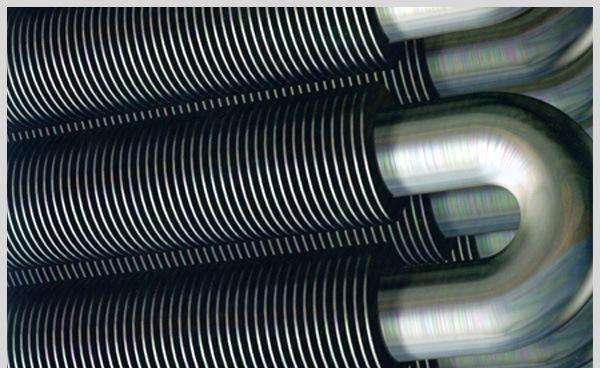Lord Fin Tube-Finned tube increase the heat transfer
How Finned Tubes Increase Heat Transfer Efficiency
Finned tubes, also known as fin tubes or finned coils, represent a critical engineering innovation designed to significantly enhance heat transfer efficiency in various thermal applications. This technical analysis explores the mechanisms, performance data, and design considerations that make finned tubes superior to plain tubes in heat exchange systems.

Advanced finned tube design showing optimized fin geometry for maximum heat transfer efficiency
Finned Tubes Technical Insight
Finned tubes can increase heat transfer efficiency by 200-400% compared to plain tubes of the same base area, making them indispensable in applications where space constraints or high thermal performance requirements exist.
Finned Tubes Heat Transfer Enhancement Mechanisms
1. Increased Surface Area (Primary Enhancement)
The primary function of fins is to dramatically increase the effective surface area available for heat transfer. By attaching extended surfaces to the outer diameter of the tube, the surface area expands by factors ranging from 3x to 15x compared to a plain tube, depending on fin geometry and density.
2. Boundary Layer Disruption & Convective Enhancement
Fins strategically disrupt the thermal boundary layer that naturally forms on heat transfer surfaces. This boundary layer acts as an insulating barrier, and by disturbing it, fins reduce thermal resistance and increase the convective heat transfer coefficient by 25-50% in typical applications.
3. Thermal Resistance Reduction
Fins effectively distribute thermal energy across a larger surface area, reducing the temperature gradient between the tube wall and the surrounding fluid. This optimization of the thermal pathway decreases overall thermal resistance in the system.
4. Turbulence Induction
In forced convection applications, fins create controlled turbulence that enhances fluid mixing. This turbulence brings fresh, cooler fluid into direct contact with the heated surfaces, significantly improving heat transfer rates.
Performance Data: Finned Tubes vs. Plain Tubes
Heat Transfer Performance Comparison
| Parameter | Plain Tube | Low-Fin Tube (5:1 Ratio) | High-Fin Tube (15:1 Ratio) | Performance Improvement |
|---|---|---|---|---|
| Surface Area Ratio | 1.0 | 5.2 | 15.8 | Up to 15.8x increase |
| Heat Transfer Coefficient (W/m²K) | 45-60 | 85-120 | 110-160 | Up to 267% improvement |
| Overall Heat Transfer (U-value) | 35-50 | 65-95 | 90-140 | Up to 280% increase |
| Pressure Drop Increase | Baseline | 15-25% | 40-60% | Trade-off consideration |
| Space Efficiency | 1.0 | 3.5-4.2 | 7.8-9.5 | Up to 9.5x more compact |
Surface Area Increase
Typical surface area enhancement with finned tubes compared to plain tubes
Heat Transfer Improvement
Increase in heat transfer efficiency with optimized finned tubes
Compactness Factor
Reduction in required space for equivalent heat transfer capacity
Finned Tubes Technical Design Considerations
Fin Geometry Optimization
The efficiency of finned tubes depends significantly on fin geometry parameters:
| Fin Parameter | Typical Range | Impact on Performance | Application Considerations |
|---|---|---|---|
| Fin Height | 3-25 mm | Higher fins increase surface area but may reduce fin efficiency | Balanced based on fluid properties and space constraints |
| Fin Density | 2-12 fins per cm | Higher density increases surface area but raises pressure drop | Optimized based on allowable pressure drop |
| Fin Thickness | 0.2-1.5 mm | Thicker fins improve durability but reduce number of fins | Selected based on mechanical and thermal requirements |
| Fin Type | Helical, Longitudinal, Segmented | Different flow patterns and heat transfer characteristics | Matched to application (gas/liquid, clean/fouling fluids) |
Material Selection Impact
The thermal conductivity of fin materials significantly impacts overall performance. Common materials include:
- Aluminum: High thermal conductivity (205 W/mK), lightweight, cost-effective for air-side applications
- Copper: Excellent thermal conductivity (385 W/mK), good corrosion resistance, higher cost
- Carbon Steel: Moderate conductivity (50 W/mK), high strength, used in high-temperature applications
- Stainless Steel: Lower conductivity (15 W/mK), excellent corrosion resistance, used in harsh environments
Finned Tubes Advanced Applications and Industry Usage
Finned tubes find extensive application across multiple industries where efficient heat transfer is critical:
HVAC Systems
In air conditioning and refrigeration systems, finned tubes enable compact heat exchangers that efficiently transfer heat between refrigerant and air, with typical fin densities of 3-8 fins per centimeter.
Power Generation
In power plants, finned tubes are used in economizers, air preheaters, and heat recovery steam generators (HRSGs) to maximize energy recovery from flue gases, improving overall plant efficiency by 3-8%.
Process Industries
Chemical, petrochemical, and oil refining industries utilize finned tubes in process heaters, coolers, and reactors where precise temperature control and compact heat exchange are essential.
Finned Tubes Technical
Finned tubes represent a sophisticated engineering solution for enhancing heat transfer efficiency through multiple synergistic mechanisms. By increasing surface area, disrupting boundary layers, reducing thermal resistance, and inducing beneficial turbulence, finned tubes can improve heat transfer performance by 200-400% compared to plain tubes. The optimization of fin geometry, material selection, and application-specific design parameters allows engineers to create highly efficient thermal systems that meet demanding performance requirements while minimizing space and cost constraints. Understanding these technical principles is essential for selecting and designing optimal finned tube heat exchangers for specific applications.

